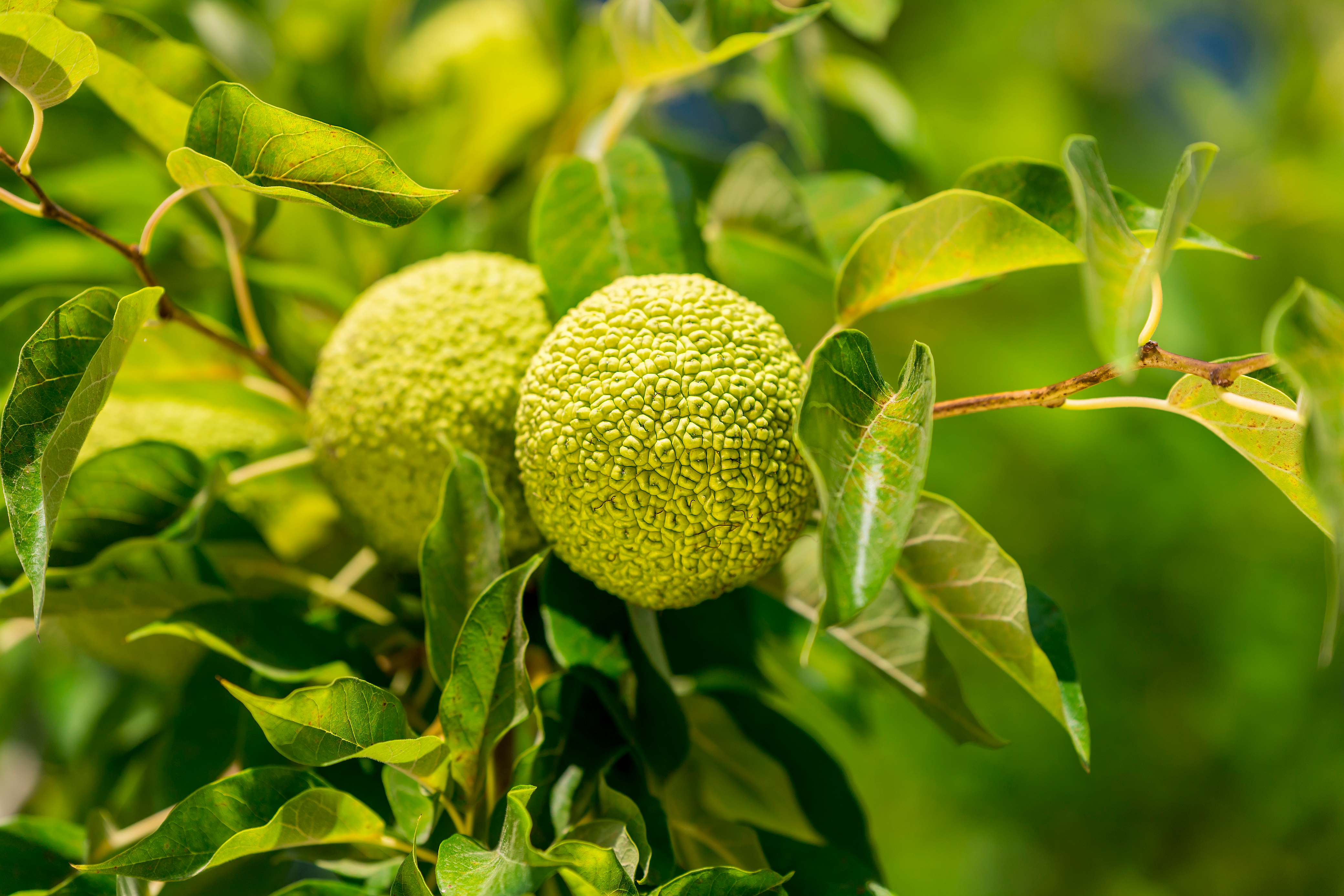Osage orange, << OH sayj, >> is a small- to medium-sized tree planted across the United States for hedges, ornamental purposes, and shade. It originally grew in Texas, Oklahoma, and Arkansas. The name refers to the Osage people of that region, and to the tree’s greenish-yellow fruit, which looks like an orange but is inedible. The Osage orange is sometimes called bodark, bois d’arc, bowwood, or hedge apple. The tree has a short trunk and crooked branches. Its long, pointed leaves are a shiny, dark green. It has thorny twigs and a milky, bitter sap. Pioneers planted Osage orange trees as a “living fence” around their farms before barbed wire came into use.
The yellow wood of the tree is hard, strong, and durable. The Osage preferred it for their bows and war clubs. It makes good fence posts and was used for wagon wheels. A yellow dye can be made by boiling chips of the wood in water.

